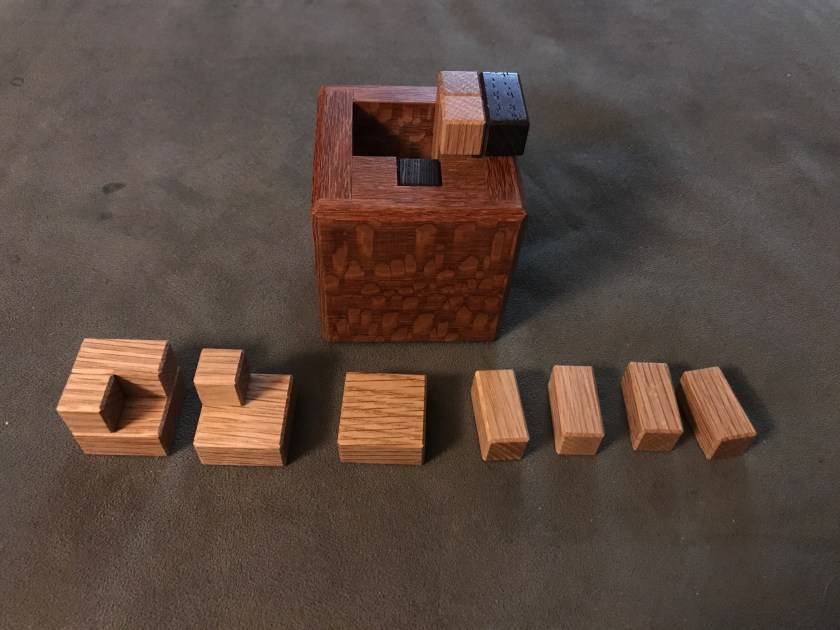Today, I have an very interesting puzzle called TRAP-R2 designed by Osanori Yamamoto and crafted by Pelikan Puzzles. It’s only a 4 move puzzle, but those 4 moves aren’t as easy or straightforward as it may seem.
The puzzle itself is beautiful. It reminds me of a double decker coaster, but I won’t be setting my beer on it anytime soon. The two coasters are separated by 4 corner posts and in between is a circle of wood that can be spun around. Spinning the circle reveals something unseen – some sort of impediment that prevents it from moving smoothly around. The thing is, you can’t see what is happening, so you have to work out what to do by feel.
It doesn’t take long before pieces begin to move, but the first available movement isn’t necessarily the correct one. What makes this puzzle really work is the fact that the tolerances are so tight. The pieces have to be in the exact correct position in order to solve it. This can be a little frustrating because if you are just a millimeter off, it won’t budge.

The first time I solved it was a complete fluke, I was just playing with it and manipulating the pieces, when viola!, it came apart. I studied the internal pieces a bit and thought “hmm, that’s not so difficult” and managed to put it back together. Confident that I knew how to solve it, I tried to repeat the process, but this time, I couldn’t open it! How can that be? I had solved it and seen its’ secrets. But nevertheless, it took me longer than I’d like to admit to solve it again.

This time, I was more determined to figure out what was going on. I don’t know if my tiny brain was just misfiring, but it was surprisingly tricky for me to figure out. There are really only 2 internal pieces and the circle so it can’t be that hard, I thought, but sure enough, it was still a bit perplexing. The way the two internal pieces fit together is rather clever and figuring out how to free that circle took me a while.
I did some mock assemblies, where I really tried to get a grasp of the exact movements required to solve it and finally was able to understand exactly what needed to happen. But despite this knowledge, it is still challenging for me to solve it – mostly because of the tolerances and the fact that there are no significant markings available to use for orientation.

Overall, I really like this puzzle and am happy to have it in my collection – however, I would only recommend it for hard-core collectors. I think its probably a bit too expensive for the average puzzler. There are still some available at Puzzle Master, but I think, for the money, you could get something with a bit more repeatability to it. Still, if you’re like me and just can’t resist spending all your money on beautifully crafted puzzles, this one may be worth it, and if you know someone who owns this puzzle, definitely give it a shot!































